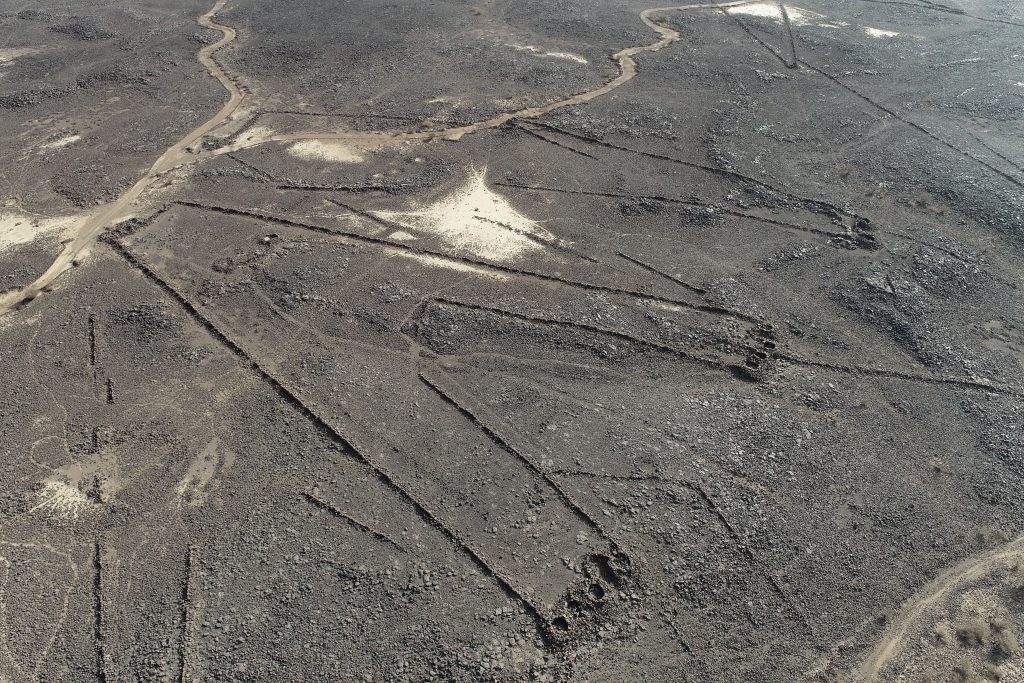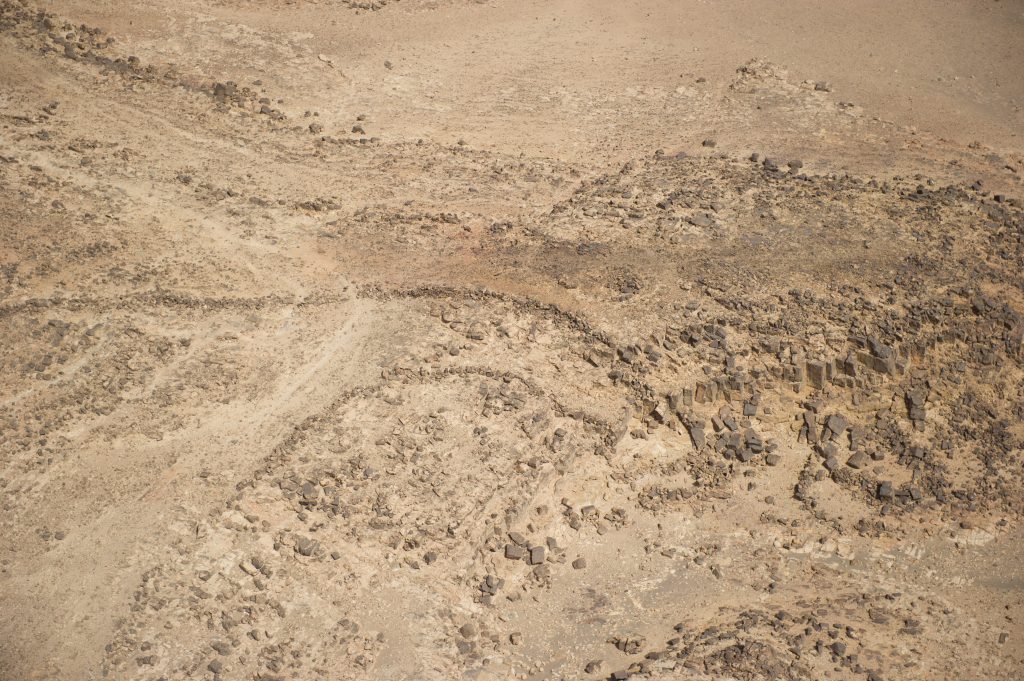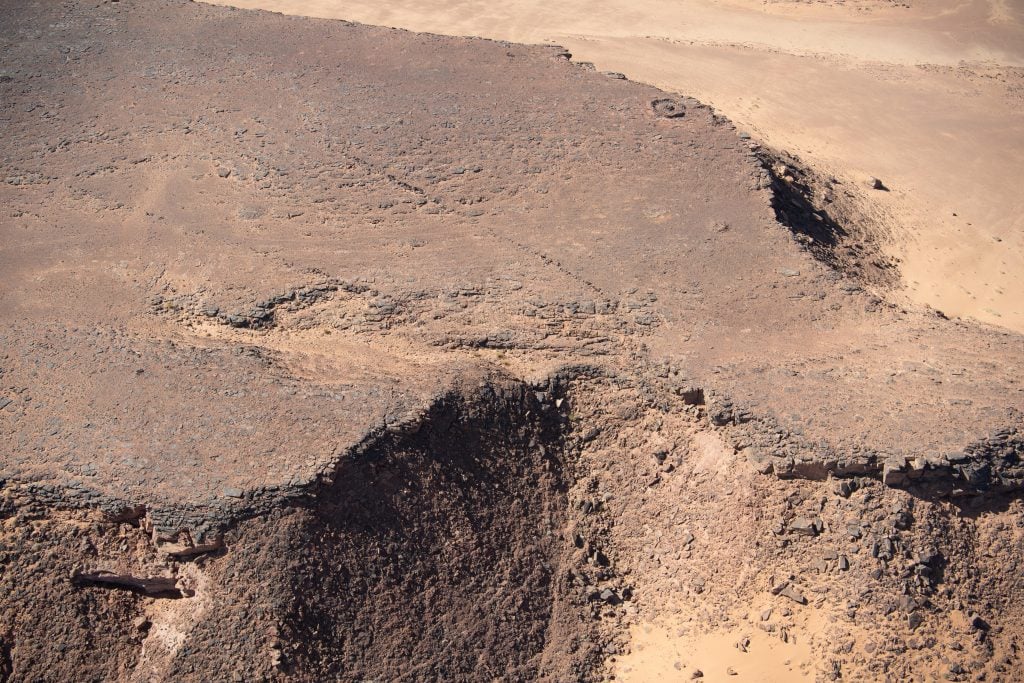Scientists Have Cracked the Origins of 'Desert Kites,' Massive Prehistoric Patterns That Were Carved into the Middle Eastern Desert

“It is politically-correct to say that primitive humans were conservationists and wildlife managers. This is a myth.
As reported below, “Three recent peer-reviewed papers confirm popular hypotheses that the desert kites actually served as mass hunting traps, allowing early desert dwellers to kill entire herds of game at once.
“In 2014, the Jerusalem Post reported there were over 4,000 known desert kites, mostly spotted through Google Earth.”
Early native populations in North American used these extensively.
NOTE: this article was originally published to news.artnet.com on December 7, 2022.

Aerial view of a kite in the Khaybar area of north-west Saudi Arabia. These ancient hunting structures were named ‘kites’ by aviators in the 1920s because, observed from above, their form is reminiscent of old-fashioned child’s kites with streamers. (Diaa Albukaai and Kévin Guadagnini, Khaybar Longue Durée Archaeological Project, RCU-Afalula-CNRS)
In the 1920s, British Royal Air Force pilots over the Middle East recorded the first sightings of what they dubbed desert kites—massive patterns carved into rocky land, often resembling the famous flying toy.
Archaeologists have since debated the purpose of these enigmas, which appear across geographies and eras, dating back to the Neolithic Period (10,000–2,200 B.C.E.) in Jordan, the early Bronze Age (3,300–2,100 B.C.E.) in Israel’s Negev Desert, and the Middle Bronze Age (2,100–1,550 B.C.E.) in Armenia. Some thought they were cultural cornerstones. Still more posited they were pens for domesticating animals.
Three recent peer-reviewed papers confirm popular hypotheses that the desert kites actually served as mass hunting traps, allowing early desert dwellers to kill entire herds of game at once. While they were active, the kites funneled gazelle and ibex down tapered, wall-lined paths which ended in massive pits or sudden cliffs where creatures were trapped and killed. The kites’s particular placement, length, and shape generally demonstrate a sophisticated knowledge of landscapes and animal behaviors.

Aerial view of a V-shaped kite on the eroded eastern edge of the Harrat’Uwayrid. Photo: Don Boyer / RCU / AAKSAU
In 2014, the Jerusalem Post reported there were over 4,000 known desert kites, mostly spotted through Google Earth. At that point, only 30 kites had ever been excavated and one percent surveyed. Around 6,500 are known today. Professors Dani Nadel and Guy Bar-Oz from the University of Haifa told Haaretz that such kites were in use until the last century.
In March 2022, the Journal of World Prehistory published “The Use of Desert Kites as Hunting Mega‑Traps.” Led by Rémy Crassard, the study’s functional evidence verifies the kites were used as hunting traps, examining their social and ecological impact. “New Arabian desert kites and potential proto-kites” appeared in the Journal of Archaeological Science in April, led by Olivier Barge, documenting early ‘open kites’ found during the last two years in Saudi Arabia’s northwestern Khaybar region. Rebecca Repper led August’s “Kites of AlUla County and the Ḥarrat’Uwayriḍ” on remote sensing research into some 200 other northwestern Arabian kites.

Ancient kite in a sandstone landscape in AlUla County, with walls that extend about 300 meters across a mesa leading to a sudden precipice over which hunters drove prey. Photo: David Kennedy / RCU / AAKSAU
This year’s spate of publications, Repper said, “reflect a wider interest and focus on these structures since the increased availability of satellite imagery.” The Royal Commission for AlUla has funded the Aerial Archaeology in the Kingdom of Saudi Arabia Project, which Repper is a part of, since 2018.
Experts behind each paper communicated during their respective studies. Repper’s was just one project the Saudi government is funding, alongside the Khaybar Longue Durée Project, co-directed by Crassard “and part of a wider program to sustainably develop this culturally rich and ancient region.” Crassard and Barge are both on the Global Kites Project, Repper added, which has “fundamentally advanced” the kite conversation.
Archaeologists hope to continue accurately dating each kite to track how hunters developed the technique over time and responded to shifting animal migration and population patterns, which mass hunting itself affected. They also plan to excavate agricultural and domestic structures from comparable timeframes to identify which animals were hunted, and why.
“This will allow us to build an understanding of how hunting fit into the culture of these ancient populations, and what these people valued,” Repper noted.
—
For more posts like this, in your inbox weekly – sign up for the Restoring Diversity Newsletter
